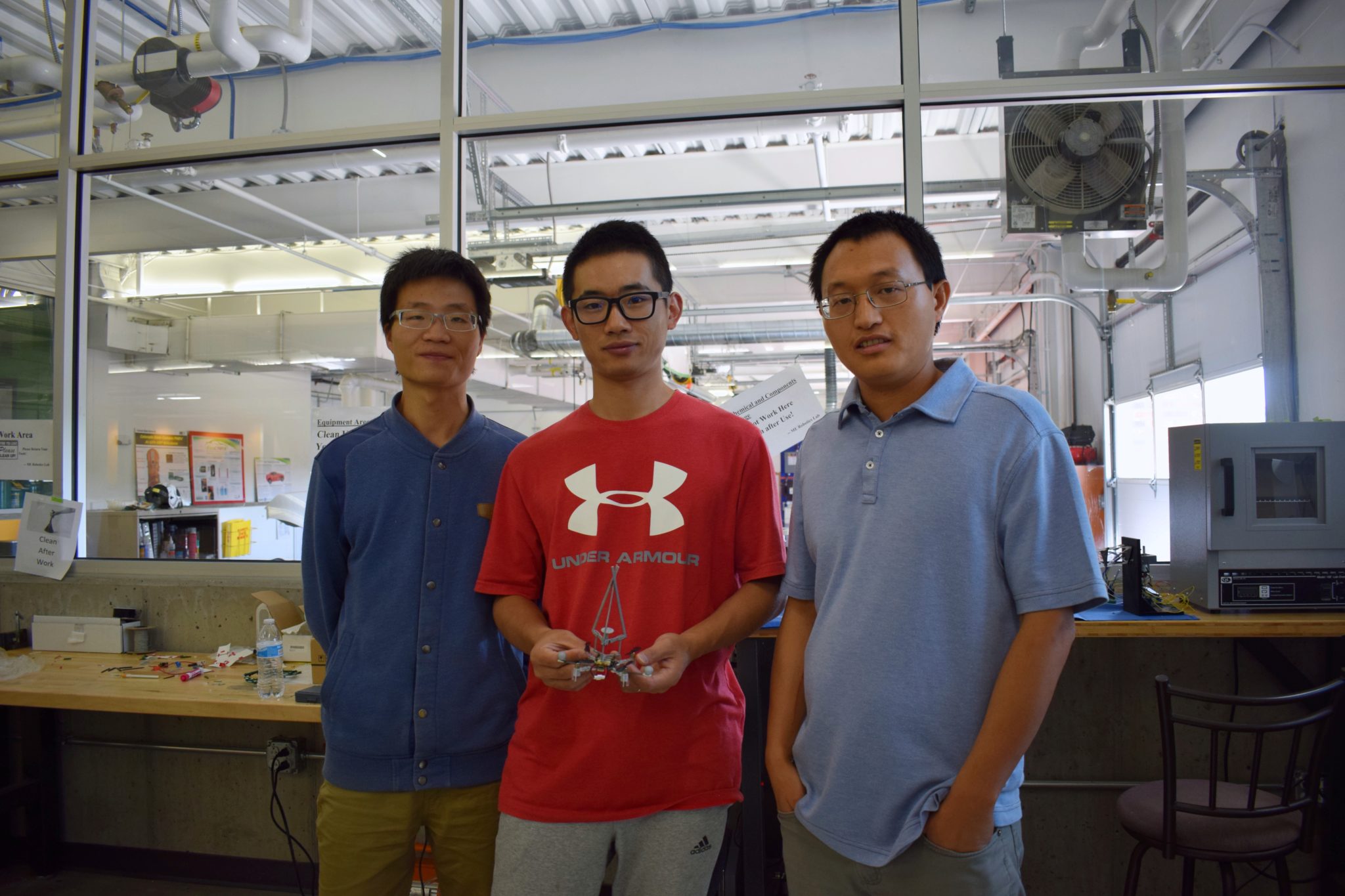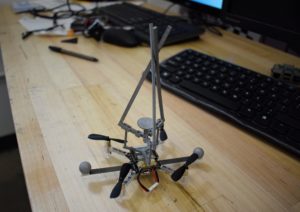
Jianguo Zhao is an assistant professor in mechanical engineering and a member of the CSU Energy Institute. His Adaptive Robotics Lab is located on the first floor of the CSU Powerhouse Energy Campus. The lab is draped in loose netting and is home base to a myriad of small flying, wiggling, and wheeled robots, many of which are able to “see” and respond to the world around them via tiny mounted cameras about the size of a quarter.
“I’ve always been fascinated with robots. It started as an undergraduate student a long time ago,” he said, adding that his Ph.D. dissertation focused on vision-based control. “Later on, I found out that visual control is very interesting especially when applied to robots, including flying robots, wheeled robots, and industrial robots.”

Zhao’s interest and passion in robotics has helped him win not one, but two National Science Foundation (NSF) grants this year. He received his first NSF grant in May to develop biologically-inspired and shape-morphing robots with various locomotion capabilities.
Just this month he received his second NSF grant to investigate vision guided perching for small flying robots. The $500,000 grant from the NSF Robust Intelligence Program will support joint research between Zhao’s lab at the CSU Energy Institute and Penn State University for the next three years. CSU graduate student Haijie Zhang will be working alongside Zhao on this grant. Assistant Professor Bo Cheng of Penn State will be studying the biological principles that blue bottle flies use to land on different stationary surfaces like ceilings or moving objects like cars, and Zhao will then apply those principles to create small flying robots that can autonomously perch onto either stationary or moving objects.
For instance, blue bottle flies combine visual clues from their eyes to infer distance and their legs that bend to absorb shock when they land so that they can land precisely and not crash. Zhao’s robots will take on these useful biological traits. He will be creating 3D printed legs that are designed to shock absorb and move naturally like the flies’ legs, and will use quarter-size cameras to allow the robot to calculate “time-to-contact.”
These advances in robotics will allow the biologically-inspired flying robots to land and perch precisely upside-down on a ceiling or right-side up on a tree branch. Zhao’s flying robots with perching capabilities will allow them to re-charge and stay out longer, rather than being limited by a short flight time (normally fewer than 30 minutes). Additionally, the robots will be about palm-sized and affordable, making the practical applications near endless. They could be used in environmental monitoring, inspecting oil and gas sites, in military surveillance or in search-and-rescue operations, etc.